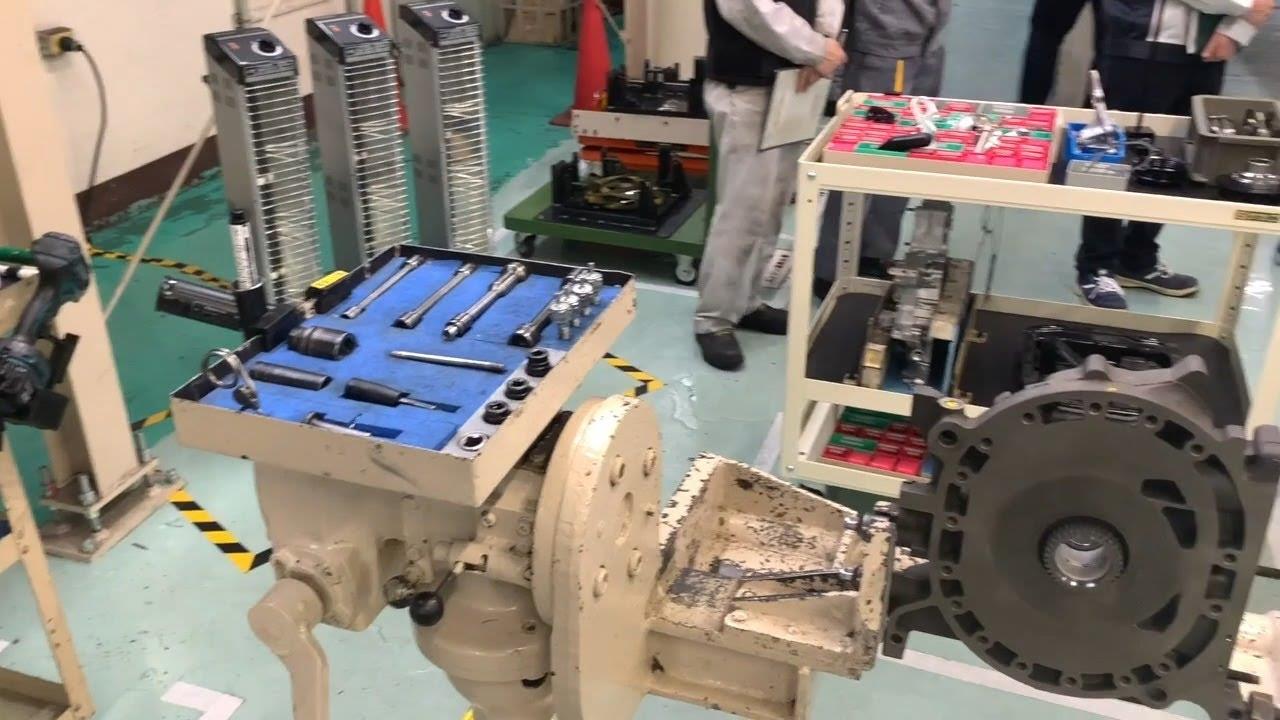
WE ARE MAZDA
Passing Down the Legacy of Hand-Assembled Rotary Engines: Our Takumi Engineers
The master craftsmen who are passing on the Mazda DNA to the next generation
Recap of the previous article:
You may have been surprised to find that Mazda never stopped producing rotary engines, even though they’re no longer used on new models. What’s more, our engineers practically handcraft each component of these engines.
For the final leg of the Mazda rotary engine factory tour, I’ll be showing you something even more astonishing. Did you know Mazda has a workshop where a new generation of Mazda engineers are crafting brand new 13B rotary engines using expertise passed down from the original rotary engineers?
At the very back of the vast factory, I catch a glimpse of a small workshop packed full of computer-controlled hand tools.
Skills that are being passed on from one generation to the next—and something even more important.
A chime rings in the factory—a cue to start the afternoon’s work. I’ve been invited to see what was described as “an area fit for the grand finale of the tour.” Intrigued, I follow Sato through a walkway until we catch sight of a small, well used-looking room with a curious sign hanging on the door:
“Rotary Engine Humancrafts Takumi Juku—Engine Assembly Skill Development Workshop”
“This is where we pass on the rotary engine legacy. I guess you want to know what kind of legacy I’m talking about. Practically speaking, we’re passing on the skills and mindset needed to build an engine. However, in reality, we believe it’s much more than that.”
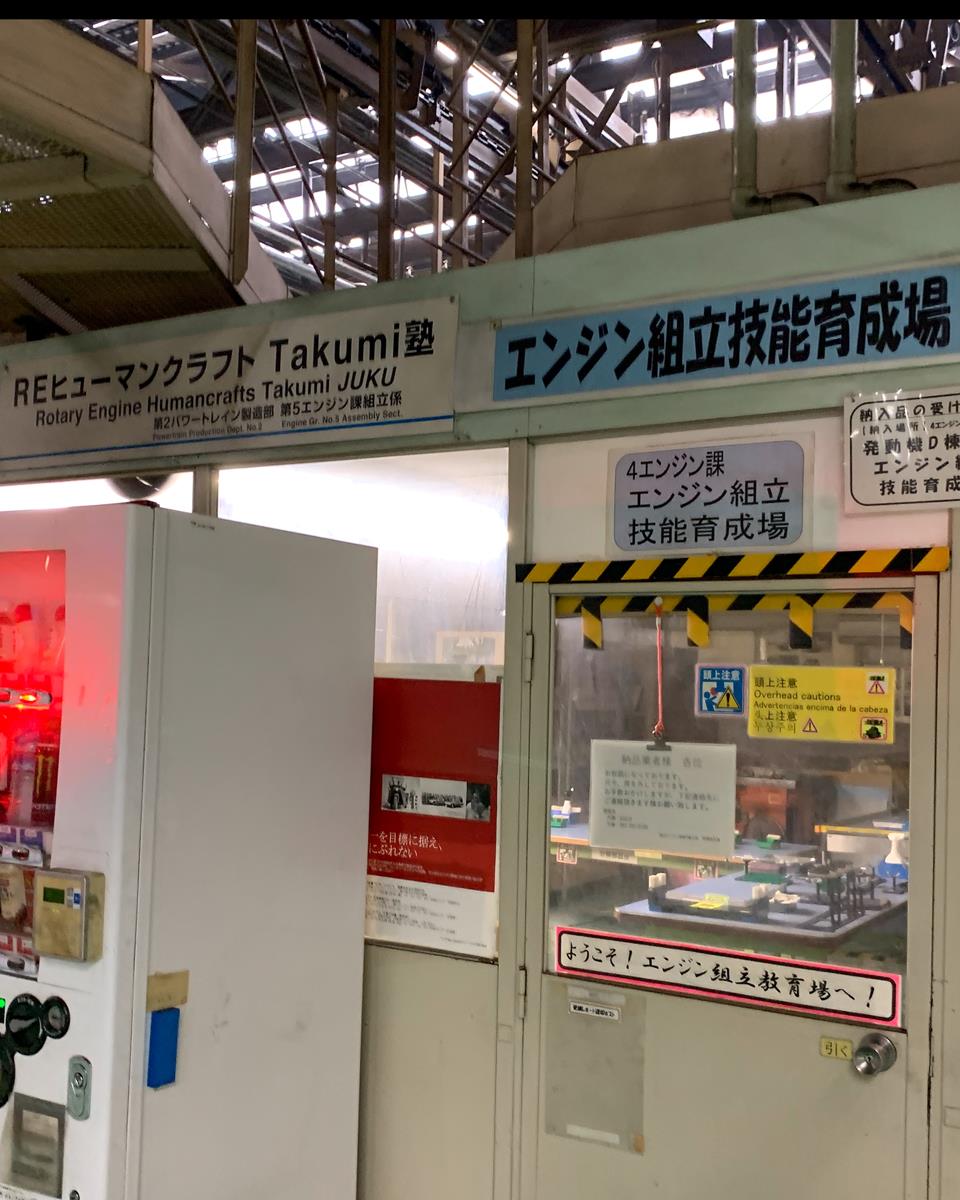
Still wondering what he meant, we arrived at our final destination.
In stark contrast to the component manufacturing area full of retro-looking processing machines that whirred and hummed away at their work, this space was scattered with LCD monitors and hand tools connected to computers. A single engine stand stood at the center of the crowded workspace.

“This is where we continue to produce 13B rotary engines. It’s not an assembly-line setup with multiple workers involved in different processes—a single engineer manually assembles the entire engine through to completion. Of course, all the components are brand new. We make ten different variations of the engine based on the model it’s to be used in and engine specifications.
Did Mazda resume rotary engine production to cater to the vintage vehicle trend?
“Definitely not! We never stopped producing rotary engines, even after RX-8 production ended in 2012.
We know many of our customers worldwide love and enjoy their rotary-powered Mazdas. We believe it’s our mission to ensure these customers will always be able to enjoy the unique, fun driving feel of a rotary engine by not only continuing to supply rotary engine parts but also offering new engines in case customers have no other option but to replace the entire engine.”
Our customers love Mazda rotary engines. The only way we can truly reciprocate this loyalty is to communicate our love for these customers through what we do.”
For Mazda, the rotary engine is more than just a product—it represents the vision that shapes our approach to car-making. This vision was based on strong conviction and brings together dreams for cars that have been passed down through generations as well as possibilities for the future. These are all things that aren’t affected by the trends of the times. In the same way the Mazda MX-5 has represented our devotion to Jinba-Ittai (a sense of oneness between car and driver) for over thirty years, the rotary engine represents more than half a century of the Mazda legacy—our dreams, hopes, and vision for car-making.
A brand new 13B rotary engine is about to be assembled right before my eyes! It’s tangible proof that this vision lives on.
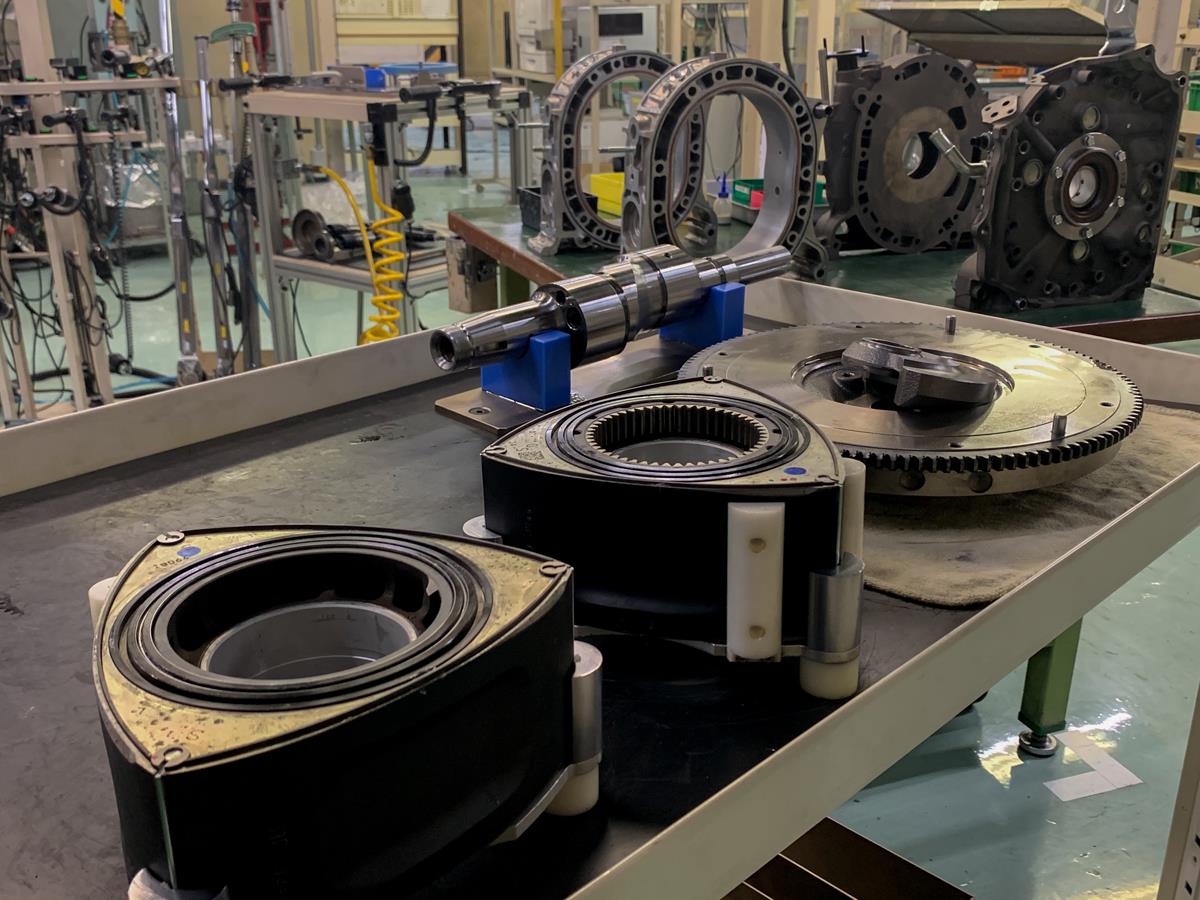
13B rotary engines hand-assembled by the Takumi engineers
“Are you surprised? This is actually nothing out of the ordinary for Mazda.”
To create great cars, you need a great vision that you truly believe in. Our products embody this vision but aren’t the vision in and of themselves. What I’m trying to say is that this kind of vision and the products it gives birth to aren’t things that come and go or are influenced by changing trends.
If you define vision as an unwavering commitment or passion you refuse to let go of, then the things that express and embody that vision are things you’ll never forget or leave behind. So, for Mazda, that’s products like the Mazda MX-5 and the rotary engine. They’re like a torch that was handed to us from the previous generation that we’re responsible to pass on to the next. Of course, we’re also doing this for our customers that resonate with this vision.”
Let’s take a look at the process of assembling a rotary engine.
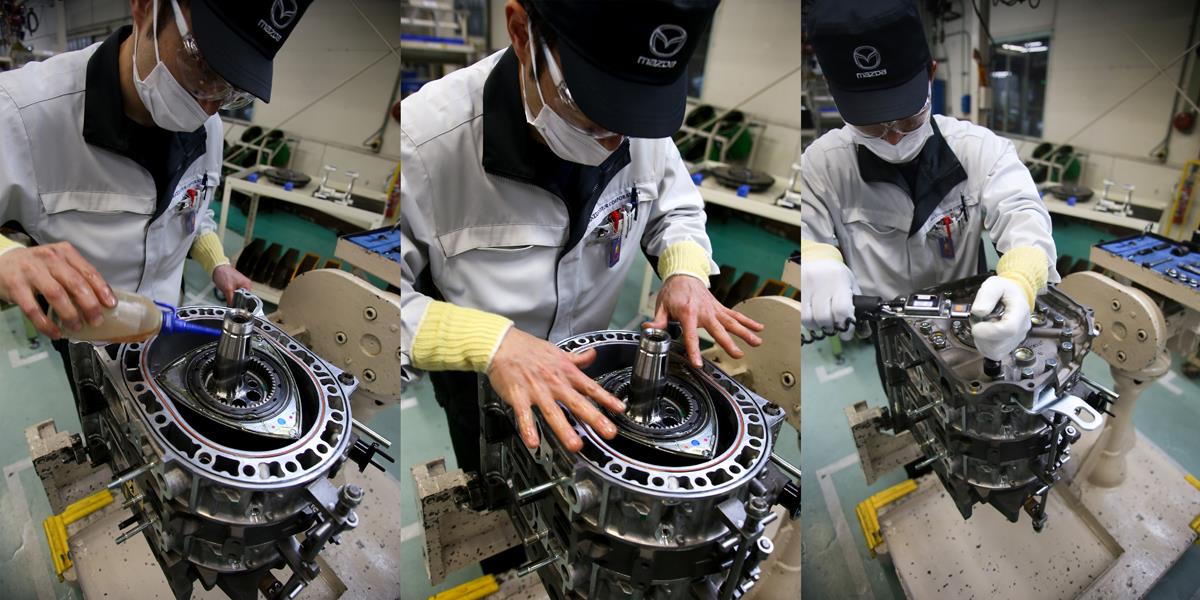
One by one, the engineer picks up parts and inspects them with their eyes and fingertips, sometimes mumbling something and pointing their finger at certain points as a quality control procedure, repeating this process over and over as they carefully assemble the engine. You can get your hands on one of these brand new, hand-manufactured rotary engines via any Mazda dealership worldwide.
Yoshiteru Inoue, one of the engineers in this team, showed me his work on an engine.
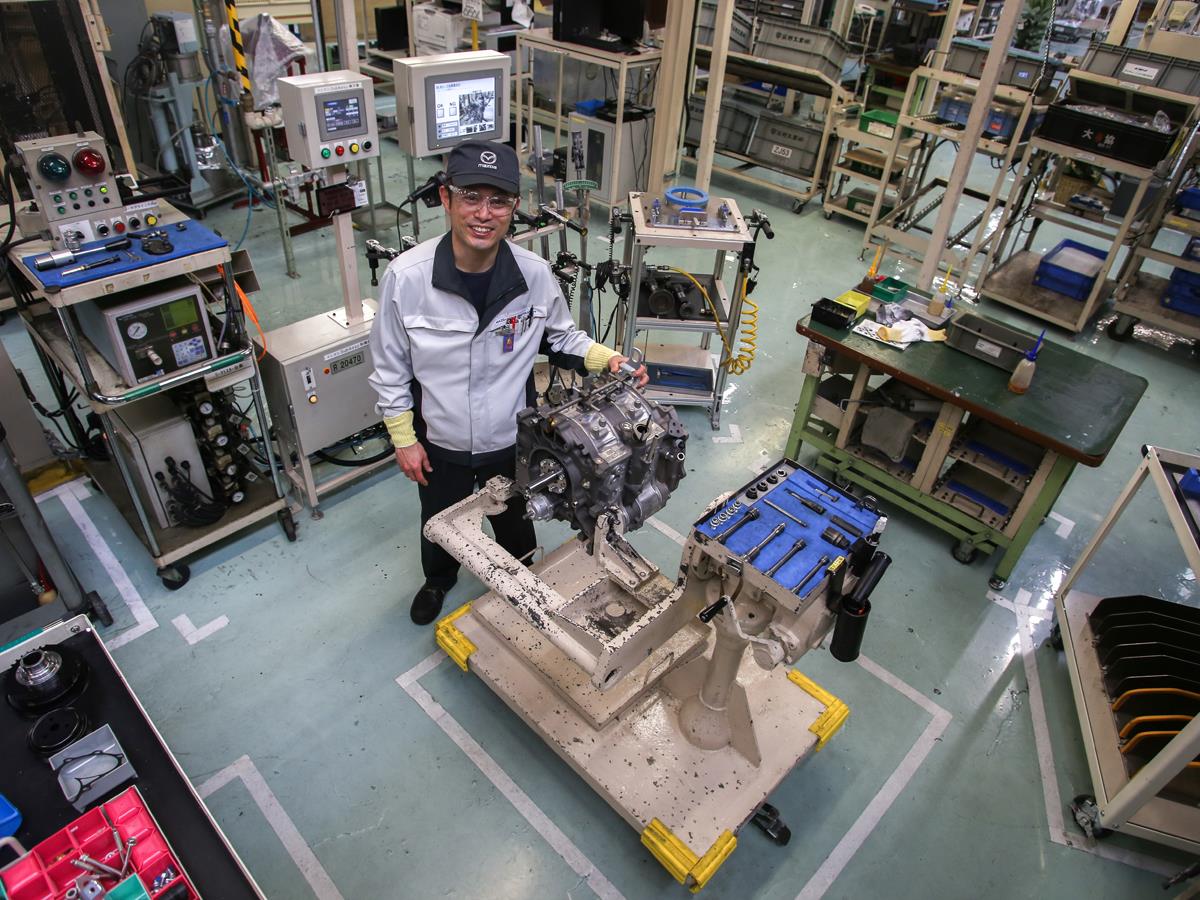
“I joined Mazda 15 years ago, not long before the discontinuation of the rotary engine in new models. For me, the rotary engine was an engine that had been retired from the frontline. My first direct involvement with the rotary engine was when I was assigned to support the production line during a busy period that hit when RX-8 sales were nearing their end. That production line was eventually discontinued but Mazda simultaneously decided to continue support for rotary engine models purchased by customers. I told my supervisor I wanted to continue working in rotary engine production—and here I am!
Currently, there’s only three of us qualified to assemble rotary engines: Happo (Tasuya Happo, Engine Group No. 3), who taught me everything I know about the rotary engine; Iwata (Koichi Iwata, Engine Group No. 3), who joined our team a year ago; and myself. We make an average of two 13B rotary engines a day.”
“I feel a lot of responsibility in this job. Every rotary engine sent out around the world was made by one of us. Similarly, it wouldn’t be taking it too far to say that each of the many engine parts hand-manufactured here in this factory is a piece of art that the engineer who made it poured their heart and soul into. We take these parts and consolidate them into engines that end up powering much-loved cars that belong to customers all across the globe. When I think about the smile that will cross their face when they use an engine I made, I feel a deep sense of both achievement and responsibility.

Over a hundred years of passion for cars—it’s this master craftsmanship and vision that is at the heart of Mazda’s DNA.
Turning around, I see someone carefully watching Inoue as he assembles an engine. His badge says “Iwata”—it’s Koichi Iwata, who Inoue had just mentioned.
“I see Happo as a master craftsman and teacher, and Inoue as a mentor. That’s the kind of vibe we have going on in this workplace.”
Even though the engines are assembled by hand, many processes are controlled by computers. Depending on the engine specifications, some parts may look almost identical but be ever so slightly different. To ensure the engineers don’t use the wrong parts, parts are stored in a computer-controlled storage unit. Parts are accessed by entering the engine variation into a computer, which then lights up indicators on the drawers containing the correct parts.
Another example of our use of computer-controlled devices is the torque wrenches. These are used to insert screws with just the right amount of force, and there’s a different torque wrench for each type of screw, each one programmed to apply just the right amount of force, all of which are controlled by computers. Engineers use a foot pedal to select the process they want to carry out and, once started, they won’t be able to proceed to the next process without completely finishing all tasks that require that specific torque wrench.
“I think we need computer control because people make mistakes, but I’ve learned plenty of things from my supervisor and mentor that can’t be left to machines. For example, how the parts feel when the rotor is being inserted into the housing correctly or how a correctly-finished engine feels when you turn it by hand—this tactile knowledge can only be learned over time through hands-on experience and being told what you’re doing right or wrong. We’re not allowed to assemble retail engines until our superiors are satisfied that they can trust us with processes that require the ability to sense a difference of a thousandth of a millimeter with our fingertips and determine whether an engine is good to go or needs to be reassembled.”
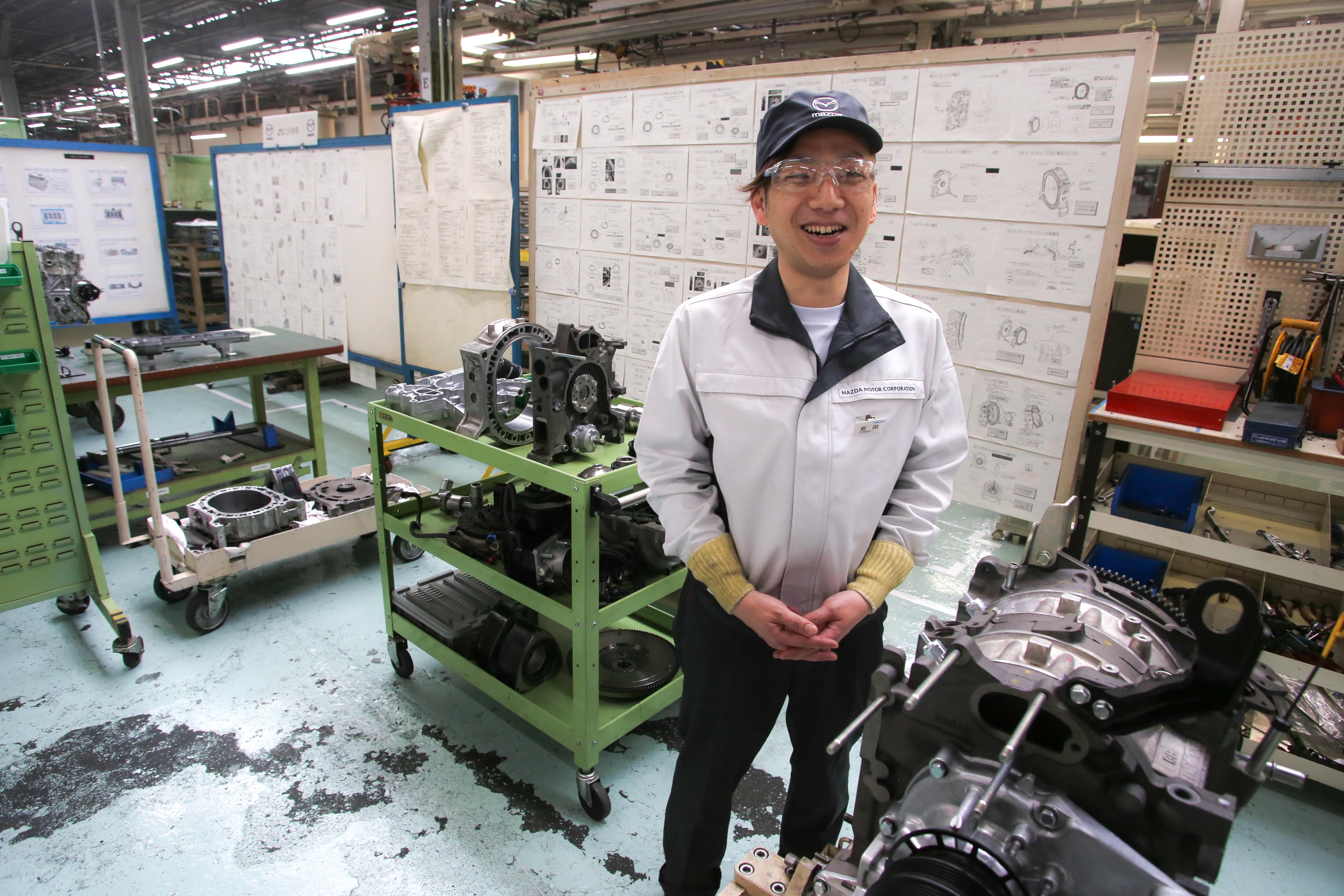
Apparently, Iwata was assigned to this team about a year ago and has been undergoing training day in and day out ever since. Despite this, he only started assembling retail engines very recently.
“I’m confident in the quality of my engines and almost want to write a note that says, “I poured my heart into this engine” and attach it to my engines with a photograph before it’s sent off to the customer. However, I definitely think it wasn’t just technical expertise I gained from my training.
Every rotary engine we make goes through an ignition test. After attaching it to an engine bench, we fill it with fuel and start up the engine. I was overcome with emotion the first time I saw a rotary engine I’d assembled running smoothly with that distinctive roar.
That’s when I finally understood our predecessors’ true vision for the rotary engine and the potential they saw in it. I feel like, in that moment, I could see why Mazda had worked tirelessly on the rotary engine to this very day and why it was essential that we passed this legacy on to the next generation.
Inoue, who had been listening quietly to what Iwata had to say, suddenly spoke up. “The rotary engine dream isn’t over—neither for Mazda nor for our customers. I’m sure you sensed this from what you’ve seen here today.
“If I can add one more thing—after being involved with the rotary engine for a long time, you start to appreciate that the rotary engine is really no more than a part designed to make Mazda’s vision for cars a reality. That’s why I think it’s important that, at the same time as we pass down our skills and knowledge, we also pass down the dreams and vision that shape Mazda’s approach to car-making. I think that’s invaluable.”
It was an inspiring factory tour. It taught me that, for Mazda, the continued production of rotary engines is also symbolic of our commitment to our vision as an automobile manufacturer. That’s why no one I met in this factory made a big deal of what they were doing—everyone just said it was a normal part of working at Mazda. I sensed the Mazda DNA flowing in the blood of each and every person I met in this well-loved factory.
And I thought to myself—this is the true meaning of Hiroshima Soul Red.
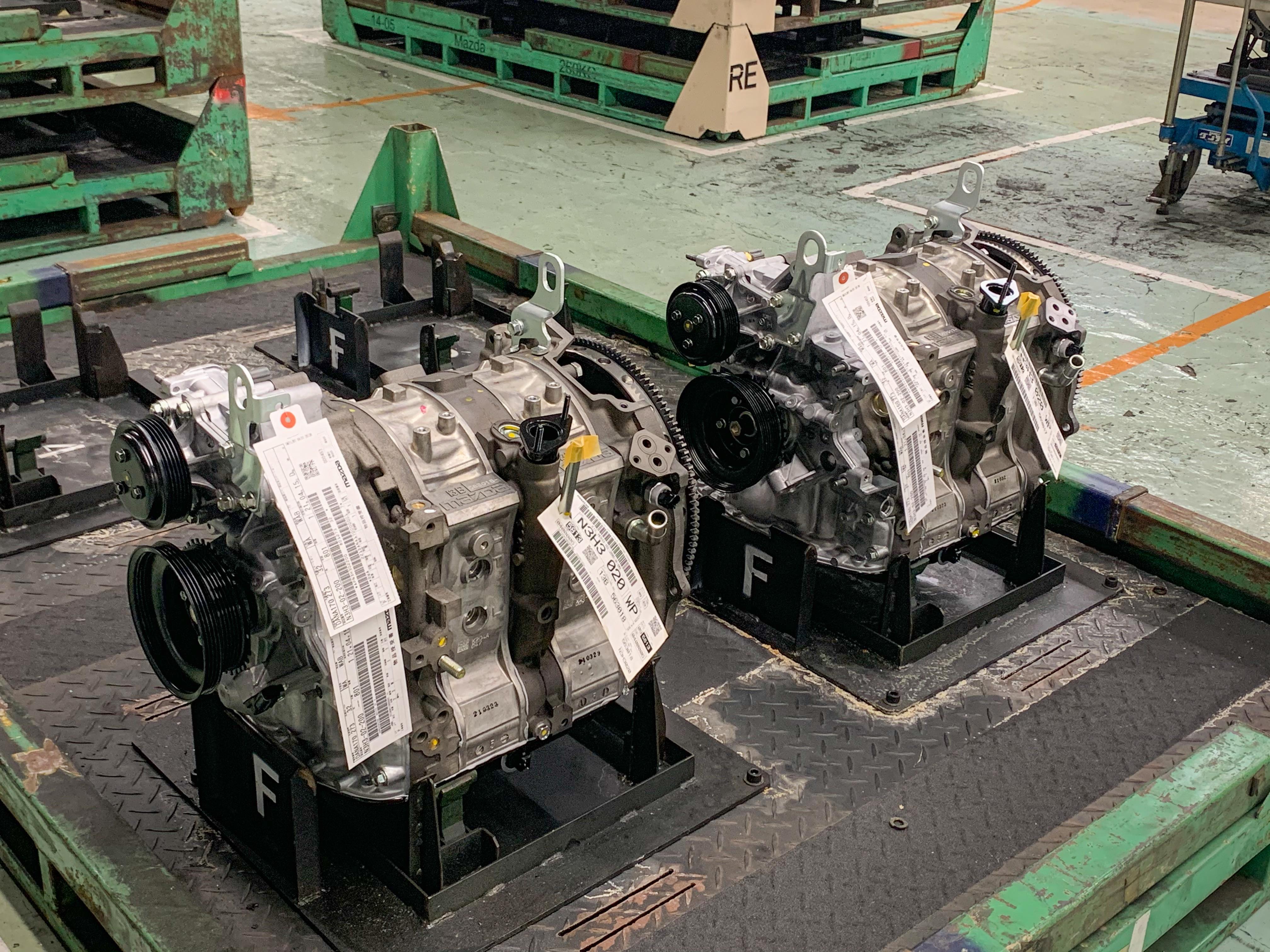
To commemorate the end of a memorable factory tour, staff from all over, including those involved in areas other than production, who’d heard what was going on got together for a group photo before we headed back to headquarters from the Rotary Engine Factory Bus Stop.
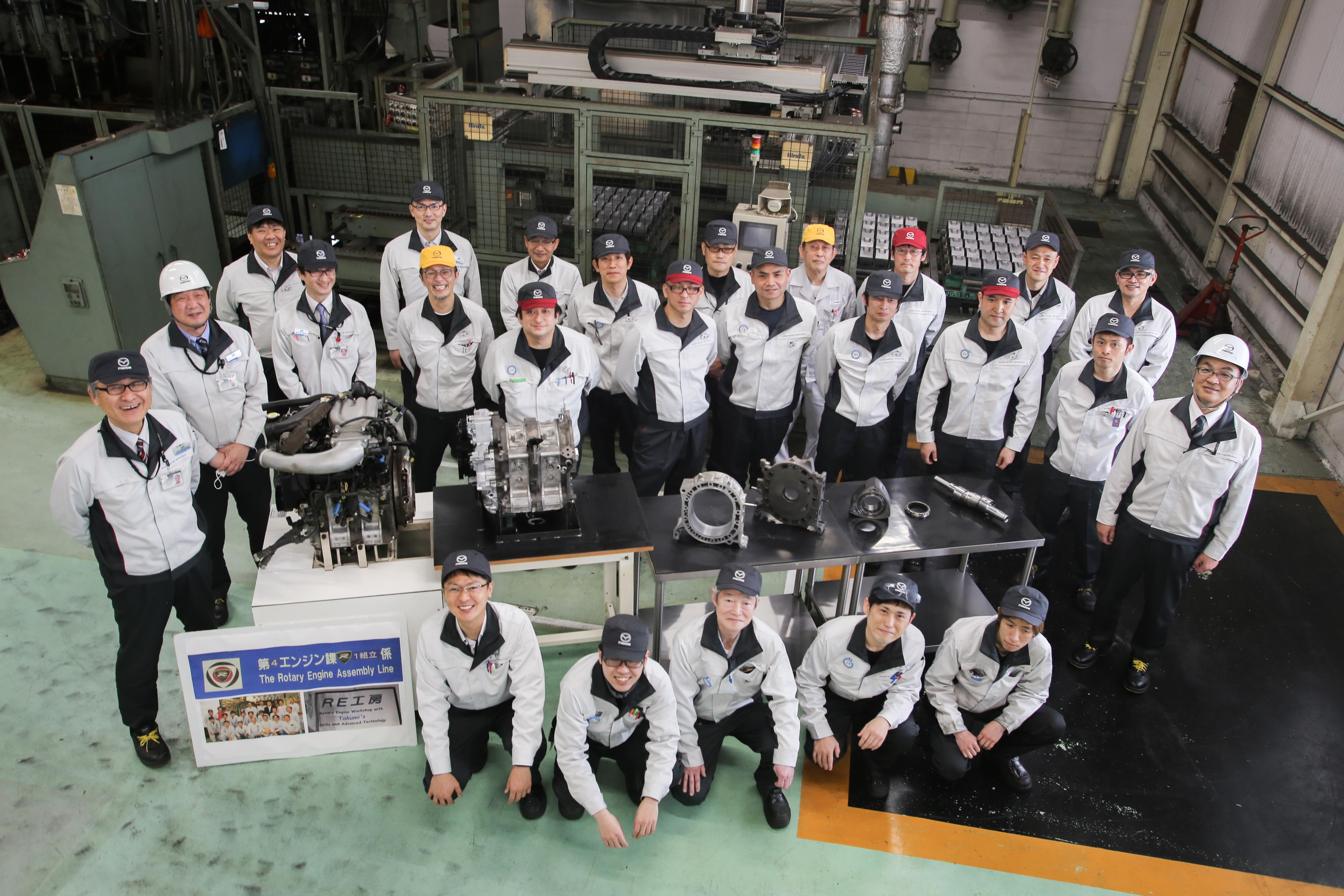
We hope you enjoyed this glimpse into Mazda rotary engine production. Those of us at Classic Mazda want more people to know that we still supply rotary engine parts and that these can be purchased through any Mazda dealership worldwide.
On top of this, 2021 marks the 30th anniversary of the Mazda FD RX-7, which launched in 1991, as well as 30 years since the 787B’s victory at the 24 Hours of Le Mans, so we’re excited to be able to share more about our rotary engines with our global customers and car enthusiasts around the world at this time.

